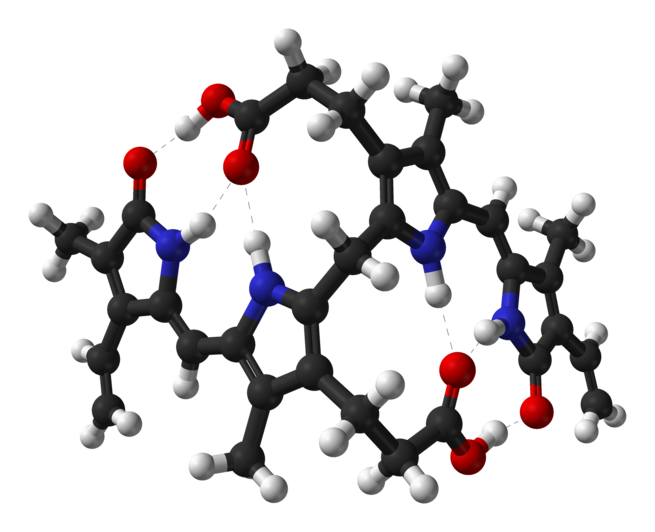
-
Bilirubin
Bilirubin is a yellow compound that occurs in the normal catabolic pathway that breaks down heme in vertebrates. This catabolism is a necessary process in the body’s clearance of waste products that arise from the destruction of aged red blood cells. First the hemoglobin gets stripped of the heme molecule which thereafter passes through various processes of porphyrin catabolism, depending on the part of the body in which the breakdown occurs. For example, the molecules excreted in the urine differ from those in the feces. The production of biliverdin from heme is the first major step in the catabolic pathway, after which the enzyme biliverdin reductase performs the second step, producing bilirubin from biliverdin.
Bilirubin is excreted in bile and urine, and elevated levels may indicate certain diseases. It is responsible for the yellow color of bruises and the yellow discoloration in jaundice. Its subsequent breakdown products, such as stercobilin, cause the brown color of faeces. A different breakdown product, urobilin, is the main component of the straw-yellow color in urine.
It has also been found in plants.
-
Bilirubin (noun)
A bile pigment that is a product of the breakdown of the heme portion of hemoglobin (which occurs within macrophages as they digest red blood cells), and which is responsible for the yellowish color seen in bruises. Extremely high levels of bilirubin may cause jaundice.
-
Hematoidin (noun)
bilirubin
-
Bilirubin (noun)
an orange-yellow pigment formed in the liver by the breakdown of haemoglobin and excreted in bile.
